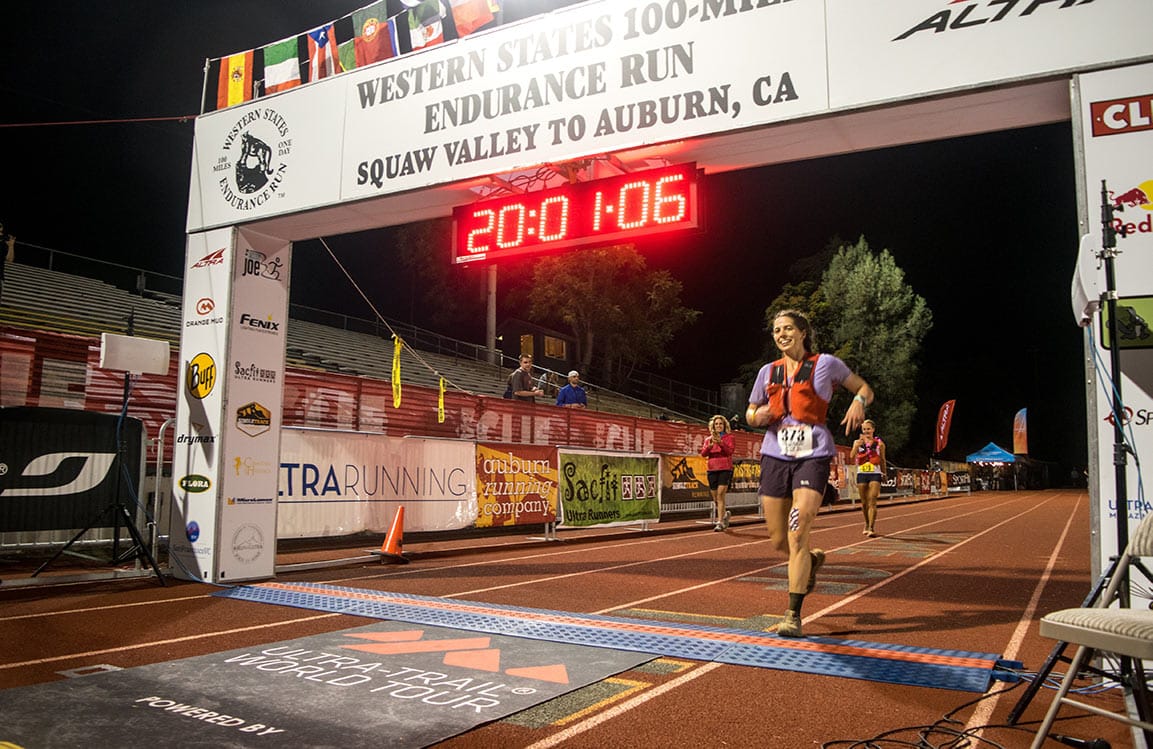
How to Leverage Cancelled 2020 Races to Crush 2021 Ultramarathon Goals
By Jason Koop,
Head Coach of CTS Ultrarunning
Races will be back in 2021. They might be different and maybe not all races will return, but mark my words now, ultramarathons will be back. Many runners with rollover entries from 2020 have copious amounts of time–now that they don’t have to wait for lottery season–to train for their event. If you are in this position, you have a huge opportunity to crush your goals for 2021. Here’s how to use the next 9 months best to your advantage.
You have the time, use it
One of things I love and loathe about the ultrarunning season is the lottery process. Every year, runners wait with bated breath on the summer’s big-ticket lottery races like the Western States 100, Hardrock 100 and UTMB. Runners either succeed or fail at gaining entry into their race of choice, and then go about planning their year, as if they’d been in some kind of FAA holding pattern. This annual ritual is so predictable that we organize our new coach recruitment, training around the phenomenon, and then brace for an influx of athletes. We see the highest number of new athletes begin to work with a CTS coach once the lottery dust settles, and the ‘oh sh!t, what did I get myself into’ takes hold.
As exciting as this time of year is, I’ve always felt this timeframe is compressed. Athletes organizing their seasons around the lottery processes typically have a 6- to 7-month window to work with and fit everything into. And typically, something gets pinched in the process. Maybe the increase in volume was not enough or the athlete missed out on a round of speedwork. More often than not though, athletes try to do too many things at the same time. They build volume at the same time as intensity and try to cram their longest of long runs in right at the crescendo of the training process (more on that later). I have the great fortune of working with athletes that go through the win/lose/draw of the lottery process as well as athletes that have a year (and sometimes more) to prepare for an event. And I can tell you with all certainty that I prefer the latter. The athletes with 6-7 months to train for an event still improve, but there is always something left on the table.
The take home message for athletes with rollover entries for 2021 is to take advantage of the training time now. You know what you are in for next summer! You have plenty of time to address all of the things you need to before race day rolls around.
First, work on your weaknesses (first 2 months)
Now is the time to do the things you suck at. Despite what your mother or your Ultrasignup score would tell you, you are not good at everything. Right now, with months of training still in front of you, you have all the time in the world to improve and round out these weaknesses. For some, this is running on extremely technical terrain. These athletes cringe at the sight of a strew of baby head rocks in their path. Ever conscious about the last ankle roll they had and not wanting to repeat the error, they tippy toe through these sections, losing copious amounts of time and wasting valuable energy in the process. For others, uphill hiking is a weakness. These athletes get left in the dust once they’re forced into a powerhike. Similar to the athlete with poor technical running ability, they are faced with the double whammy of being slower and the uphill costing more effort.
Weaknesses on the trail hit you with a lethal one-two performance punch. First, you are hit with the sheer time loss that comes with being deficient in one particular area. You are slower over the rocks or when you have to hike. Next, you are smacked upside the head with an increase in effort associated with the endeavor. The same speed costs you more physical and mental effort, which is in limited supply in an ultramarathon.
So, whatever your weaknesses are, take the time NOW to improve them. You can easily spend the next two months working on technical running, uphill hiking or whatever your trail kryptonite happens to be. The plan to fix these weaknesses does not need to be fancy, you just need to be consistent at doing it!
I’ve broken the following four phases up into convenient 2-month timeframes for a grand total of an 8-month training process. Your training does not have to be this exact, but the point is to give enough space to a little bit of all of these.
► Free Ultrarunning Training Assessment Quiz
Take our free 2-minute quiz to discover how effective your training is and get recommendations for how you can improve.
Next, build higher intensity (next 2 months)
After you have rounded out your weaknesses, next it is time to build your capabilities at the highest of intensities. Let’s face it, the ultramarathon you are preparing for is a low-intensity event. I don’t care how hard you think it is, if you are an elite athlete, or even if you are ‘only’ doing a 50k. Your ultramarathon is still a low-intensity endeavor in the general scheme of things (most ultramarathons are contested at intensities of 50-70% of VO2max). Following the periodization principle of doing the least specific things first and most specific things last, you can save the long runs and back to back runs for later and use this timeframe to do interval work at very high intensities (in excess of >90% of your VO2max). Many ultrarunners won’t touch this type of intensity, and if they do, they don’t do it frequently enough to make much of an impact. They (unnecessarily) fear injury or think that the effort is unproductive. The fact of the matter is, work at this type of intensity is incredibly beneficial, even to ultrarunners. But, in order to make the most out of it, you have to carve out specific periods of time to devote to this type of training.
So, once you have worked on your weaknesses, it’s time for a block of RunningIntervals (which I have described in detail here). A typical workout would be 6 X 3 minutes hard, 3 minutes easy or 8 X 2 minutes hard, 2 minutes easy. In this case, “hard” means the maximum intensity you can maintain for the duration of the interval. The primary goal of these workouts is to raise your VO2max as well as make this intensity more sustainable so running at easier intensities is faster and comes at less of a cost.
Enjoying This Article? Get More Free Running Training Tips
Get our coaches' best training advice, delivered straight to your inbox weekly.
After that, build mileage (2-3 months after that)
Now that you are getting into the meat of your season (3-4 months away from the event) it’s time to build up your mileage. During this time, the intensity of any intervals should be reduced so that you can focus on supporting your volume build. You can use this time to build in a couple of training races to act as longer supported runs, or even plan out a training camp consisting of a few high-volume days in a row. When faced with a normal lottery-centric season, many athletes will skip straight to this phase, forgoing any work on weaknesses or on intensity. They can make improvements in this fashion up to a point, but after a few years, progress will begin to stagnate.
Plan on your highest volume weeks and single run volume be at least 4-6 weeks out from your race. This gives you time to build up your mileage slowly and, more importantly, allow the last critical phase of training to adapt from the process. All too often, athletes with compressed training cycles will leave their highest volume weeks to the very end of training, which is a noble yet classic training blunder. Whenever your highest acute workload (the amount of training stress you have over 7 days) and chronic workload (the amount of workload you have over several weeks) collide at the same time, it’s a recipe for overfatigue, which is the last thing you want leading up to a race. So, get your highest volume weeks in with enough time to spare before your race and leave the last few weeks to home in on the final phase of training.
Finally, get specific (final 2 months)
Now that your mileage has built up to where you feel confident in your abilities, it’s time to spend the last few weeks getting specific. To do this, run on the terrain that is most similar to your event and test out any gear you think you will need, such has hydration systems. Most importantly though, practice the nutrition strategy you plan on using on race day, and train your gut. More and more, we are starting to see emerging evidence that the gut is trainable. This means it can adapt to taking in more calories if you stress it during training. In order to do that, you can consume 25-50% more calories during a gut training trial compared to what you plan on consuming during the race. We don’t quite know how trainable it is or if training the gut requires long term (think months) or only short term exposure (weeks). However, the trend and current thinking is that just a couple weeks where you perform 2-3 ‘gut-training’ trials can make a marked impact on your ability to tolerate foods. So, while you should not save all of your nutrition planning for the last few weeks, you can certainly save some of these gut training trials to the very end.


Comments 1
Pingback: How the "Lost Season" Affected 2021 Western States Endurance Run Results - Jason Koop